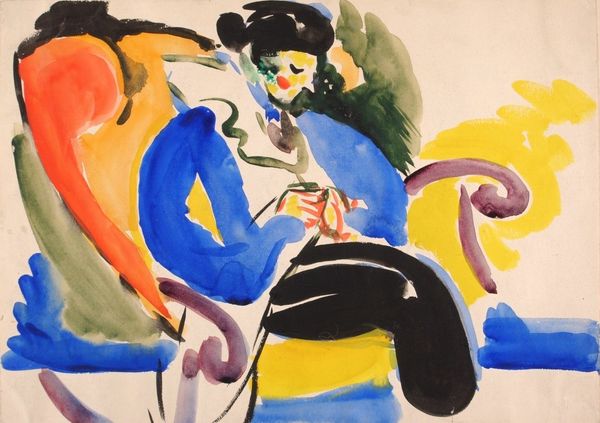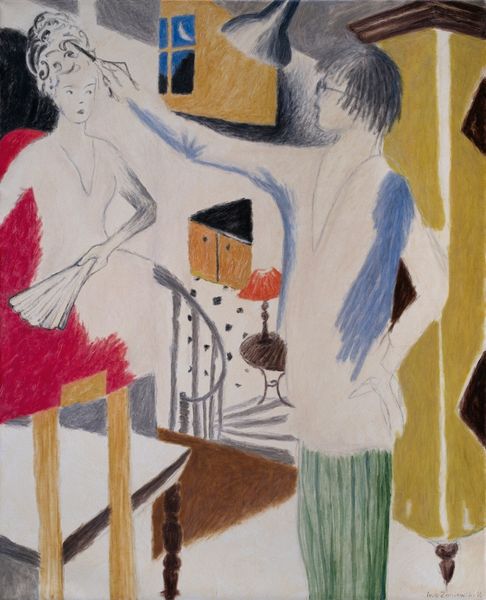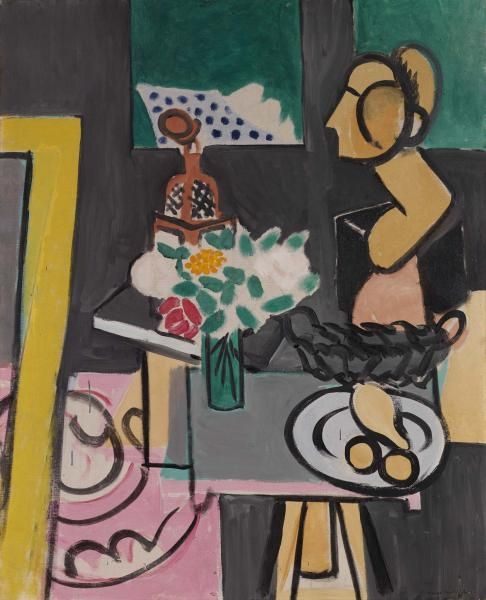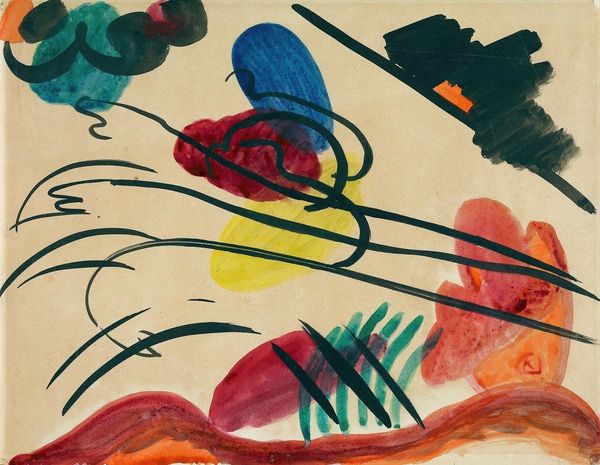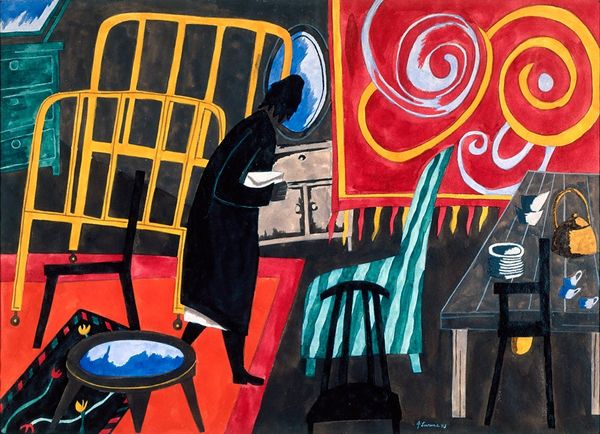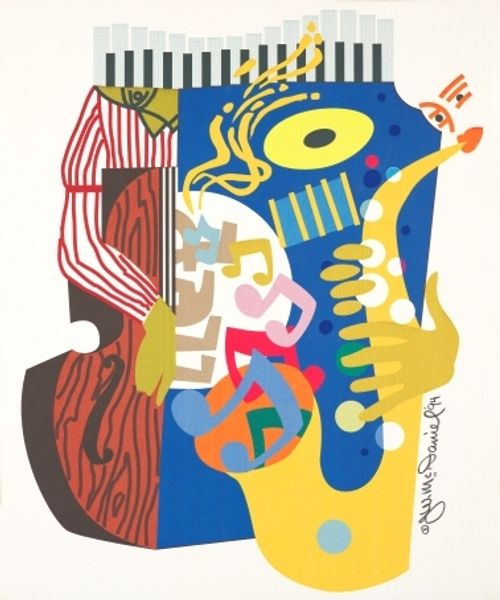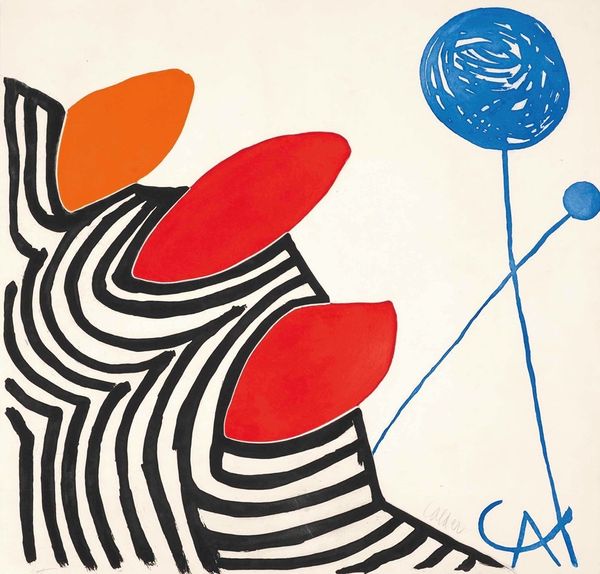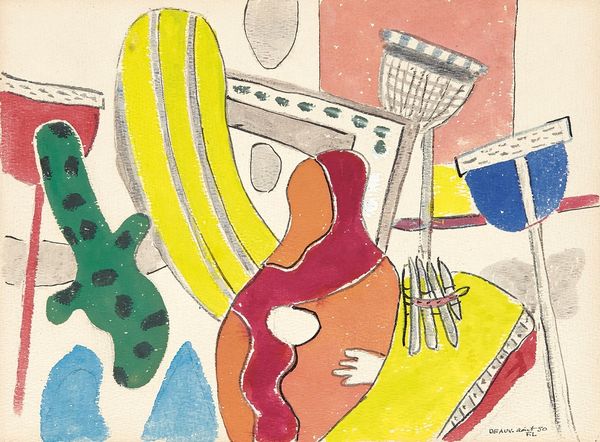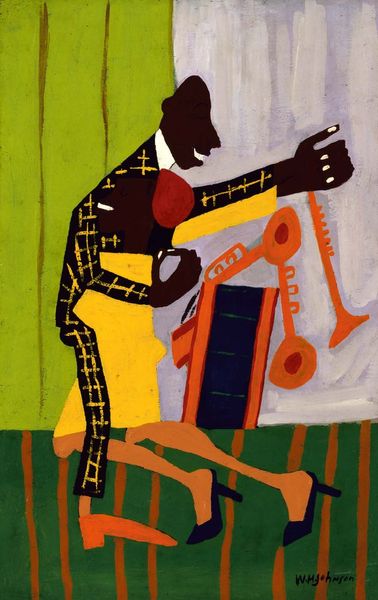
Copyright: Public Domain: Artvee
Editor: So, this is Henry Lyman Saffen's "Calligraphic Interior," from around 1915, done in watercolor. It's… kind of baffling! It almost feels like a jumble of patterns and shapes. I’m really struggling to make sense of it. What are your thoughts? How do you even begin to unpack a piece like this? Curator: It *is* a lot to take in at first glance! But what interests me most is the tension between its seemingly naïve style and the sophisticated, even rebellious, art world that Saffen was engaging with. Consider the time: 1915. Europe is at war, and the art world is exploding with experimentation – Cubism, Futurism, Dada. Saffen, an American artist, creates this… what could appear at first to be a "folksy" interior scene. But is it really that simple? What public values did the prevalence and popularity of Intimism convey in pre-WWI America? Editor: Well, I suppose painting an "interior" offers a kind of retreat, doesn't it? Like escaping the chaos... Curator: Exactly! Intimism, with its focus on quiet domestic scenes, had a very specific cultural value attached to it in the public arena: it reinforced the importance of the private sphere. Yet, in this painting, he complicates that domestic ideal. The “calligraphic” aspect suggests something beyond the purely representational function of painting, a turn inward toward mark-making. Editor: So, the 'calligraphy' isn't about literally writing, but more about… the gesture, the act of creating? The freedom in the line itself? Curator: Precisely! And doesn't that question the traditional role of art within the constraints imposed on it by institutions and societal conventions? Naive Art was becoming ever more recognized and appreciated, and Saffen appears to engage with and critique those perceptions. Who gets to define what art is 'supposed' to be? And who does it serve? Editor: That’s a really interesting point! So, this painting, in its own way, is pushing back against established norms, both through its seeming naivety, and because of its moment in the evolution of Modern Art and Naïve Art in particular. Thanks, I see it in a totally different light now.
Comments
No comments
Be the first to comment and join the conversation on the ultimate creative platform.
